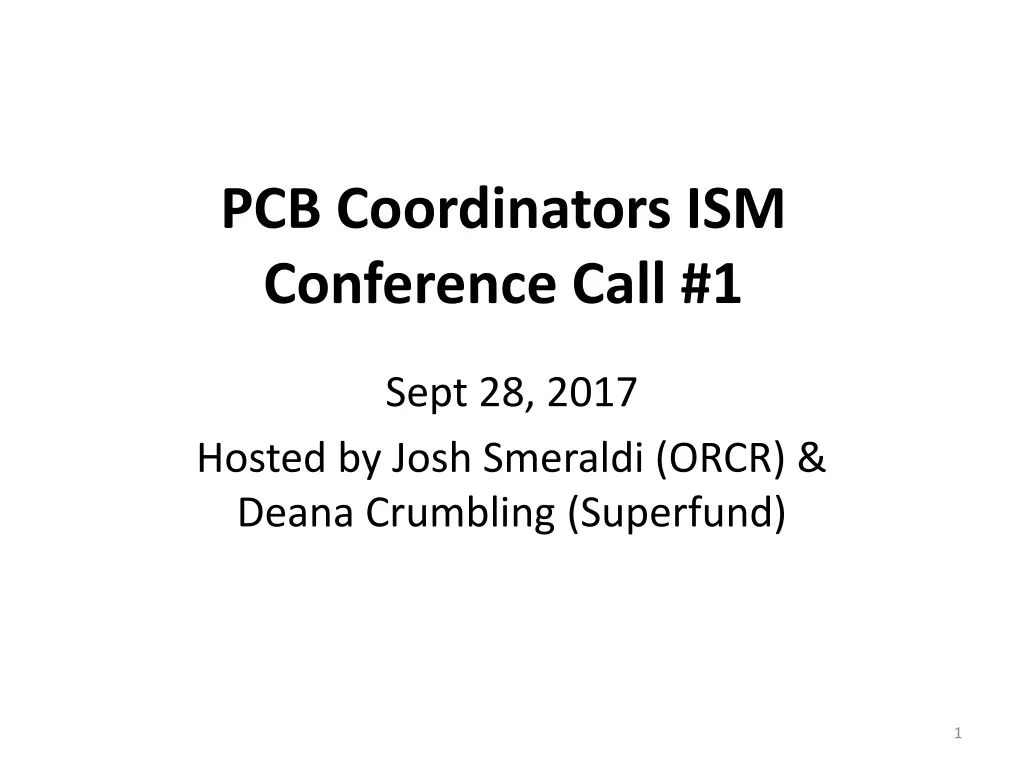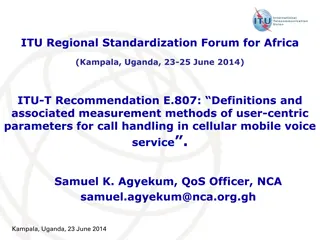
Understanding Incremental vs Composite Sampling in Environmental Analysis
Explore the differences between incremental and composite sampling techniques in environmental analysis, including terminology, sample processing, and quality controls. Learn how analytical results are derived from composite samples and the significance of field and lab replicates.
Download Presentation

Please find below an Image/Link to download the presentation.
The content on the website is provided AS IS for your information and personal use only. It may not be sold, licensed, or shared on other websites without obtaining consent from the author. If you encounter any issues during the download, it is possible that the publisher has removed the file from their server.
You are allowed to download the files provided on this website for personal or commercial use, subject to the condition that they are used lawfully. All files are the property of their respective owners.
The content on the website is provided AS IS for your information and personal use only. It may not be sold, licensed, or shared on other websites without obtaining consent from the author.
E N D
Presentation Transcript
PCB Coordinators ISM Conference Call #1 Sept 28, 2017 Hosted by Josh Smeraldi (ORCR) & Deana Crumbling (Superfund) 1
Topic: Terminology Discrete/grab samples vs. composite field samples Increments vs. incremental samples A composite field sample per TSCA vs. a composite field sample per incremental sampling Explain how all analytical results come from a composite sample Field replicates vs. lab replicates Show example of the type of information can get from the field & lab replicate data 2
Discrete or Grab Samples Area for which a decision is to be made 4 separate samples 4 separate results Sampling Locations: 200 grams each into jar 34 ppm PCB 14 ppm PCB #1 #2 41 ppm PCB 11 ppm PCB #3 #4 25 ppm = mathematical average 3
A Composite Sample Small samples pooled into single large sample 4 x 200 = 800 grams Area for which a decision is to be made Sampling Locations: 200 grams each into jar #1 #2 25 ppm = physical average #3 #4 Because the small samples get pooled, they are not samples in the usual sense For clarity, the individual portions contributing to a pooled sample are called increments 4
Increment vs. Incremental Sample The individual portions contributing to a pooled sample are called increments After increments are pooled, the entire thing is called a composite or an incremental sample DU (see next slide for the difference between these 2 things) DU-IS Sample 5
Incremental Sample vs. Composite Sample Every incremental sample is a composite, but not every composite sample is an incremental sample An incremental sample is a composite because it is formed by pooling increments (which is the only requirement to qualify as a composite ) An incremental sample is a special type of composite having extra requirements: Number of increments has a statistical basis Processing of the pooled sample much more rigorous than usual practice for general composites Subsampling procedure is different Additional QC checks required 6
Usual Homogenization Instructions for Composites: Stir until homogenized 7
A TSCA Composite Sample vs. an Incremental Sample (1) TSCA s Area of Influence is the same thing as a Decision Unit (DU) TSCA s compositing blends samples from several different DUs 24.2 ft2 8
A TSCA Composite Sample vs. an Incremental Sample (2) Incremental sampling compositing blends increments ONLY from within a single DU DU DU-IS Sample 9
All analytical results come from a micro-scale composite Every movement of a soil container brings together a different assemblage of particles Each unique assemblage represents a unique potential subsample with a unique concentration 10
What are Replicates? Replicate / replication means doing the same thing more than once in order to determine reproducibility Answers the question: If I do the same thing again, will I get the same outcome? For soil samples: If we use the same procedures to repeat sampling and analysis for PCBs on the same area of soil, do we get the same PCB results? Replicate means more than 1, exact number unspecified 2 replicates = duplicates ; 3 = triplicates ; 4 = quadruplicates 11
Why Replication Is Important When the outcome is a numerical result (e.g., concentration data), math can be used to measure the degree of reproducibility, also called precision Knowing data precision is important in 2 ways: Decision confidence: How sure would you be that a DU is <50 ppm if there were duplicates and one result was 10 ppm and the other was 100 ppm? Quality control: Procedures are unreliable if they cannot produce consistent (precise) results. Faulty procedures need to be fixed or replaced. 12
Field Replicates vs. Subsampling Replicates Field replicates measure how well a field sampling design works. It works well when repeats of the same collection procedure over the same field area gives field samples that have similar results. Subsampling replicates (also called lab replicates) measure how well the subsampling process works. It works well when repeat subsamples (also called analytical samples ) taken from the same field sample give similar results 13
Field Replicate Incremental Samples for PCBs that Didn t Work MIS Triplicates (60 increments each): A: 19 mg/kg (yellow dots) B: 24 mg/kg (orange dots) C: 270 mg/kg (pink dots). . . . . . . . . . . . . . . . . . . . . . . . . . . . . . . . . . . . . . . . . . . . . . . . . . . . . . . . . . . . . . . . . . . . . . . . . . . . . . . . Area = 6000 sq.ft. . . . . . . . . . . . . . . . . . . . . . . . . . . . . . . . . . . . . . . . . . . . . . . . . . . . . . . . . . . . . . . . . . . . . . . . . . . . . . . . . . . . . . . . . . . . . . . . . . . . . The goal for field samples is that they are representative of the field area from which they are collected. Widely divergent results from the same area cannot all be representative. Therefore, the results from these triplicate field samples show there is a problem with the sampling design. 14
Subsampling/Lab Replicates Example PCB Results of 10 replicate subsamples from a single field sample Range: 9 to 230 ppm Indicates a problem with the subsampling procedure 15
Value of Field & Lab Replicates The QC for the Site A project showed a problem with the subsampling procedure, because its variability (RSD = 25%) was higher than the field variability (RSD = 18%). Corrective action for the subsampling procedure was identified and implemented in the Site B project. The fix was successful, as shown by the greatly improved subsampling precision (i.e., a drop in variability from 25% to 5.4% RSD). Subsampling RSD (%) 16















